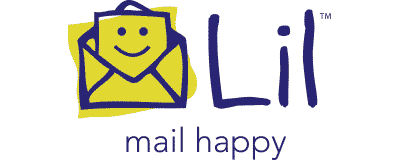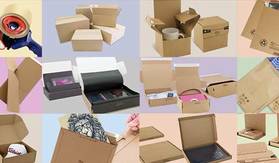
7 easy digital marketing steps for boosting eCommerce sales
Started in 2014, Curated Digital is a start-up-turned-stay-up digital marketing agency with a bit of a difference. After working at Google since its beginnings in 2003, an attempt at a comedy career and a few years crossing the brand and agency sides, Simon Douglass wanted to start an agency that actually listened to client goals and worked collaboratively on their strategies instead of getting bogged down in the politics of big business. Now, 4 years and over 20 new hires later, Curated Digital has firmly placed themselves as an agency who deliver clever digital marketing strategies to ambitious brands. We put Simon's 15 years of experience in the industry to the test. Here are his 7 top tips for boosting e-commerce.
1. Know your customers' online journey
A simple starting point for any business trying to boost online sales is to task yourself with making your lead generation process more efficient through user journey analysis. It sounds more complicated than it actually is, and you'd be surprised how many brands attempt to implement a lead generation strategy before looking at what's already happening and what could be going wrong on their site. Using tools such as Behaviour Flow and Conversations Paths in Google Analytics, you can see what your customers are clicking on, what they're buying and how much, and also what they're deciding not to buy. If it becomes clear that potential customers are clicking, but not buying, it might be time to edit product pages or develop dynamic content; something to influence their purchasing decision. If they're searching for something specific and can't find it on your page, however, then think about simplifying the customer's path to buying. Once you're more aware of what's going on, you'll be able to make the relevant changes.
2. Email marketing
In the wake of GDPR, developing an effective email marketing strategy can be a tricky task, but it can deliver more benefit than ballache when done right. According to a study by Forrester Research, email makes up 17% of digital marketing spend but is responsible for 24% of revenue. So, if you're willing to invest in digital to drive e-commerce, email is worth thinking about. Being able to directly contact potential customers about new deals, offers, or a cheeky nudge towards a half-full shopping cart, can increase the chances of a direct customer journey to purchase. A good email marketing strategy takes away the need for the customer to make a query via a search engine when a direct link to what they want is already waiting for them in their inbox. If you want a good example, then check out Lil Packaging's you can sign up to it here.
3. Content marketing
Content development is always one of our first strategic considerations when increasing a client's e-commerce potential: it can boost sales both directly and indirectly. Creating and uploading authoritative, well-written content to your site not only adds to your brand development but makes you much more attractive to Google. Aside from supporting wider SEO strategies, content can have a direct impact on e-commerce performance. To start with, think about developing content pages that give context to core products that contain Call To Actions (CTAa) to purchasing pages. Why should a customer buy your stuff? Tell them. Don't plaster them with sales talk though as customers get put-off easily. You need to find the balance between establishing product understanding and product need. A content strategy is more than just uploading blog posts, however. Content should be derived through analysing consumer search intent. Find out what your customers are searching for and deliver them a solution to it. There are many ways this tactic can work successfully, and fortunately, it's one of our specialities at Curated.
4. Instagram
Instagram might have a bit of a name for being a fashion-focused, influencer-heavy platform, but that doesn't mean that most brands can't benefit from the platform. With over 500 million daily users, it would be silly not to at least try it out. Plus, with the array of new features recently added to the site, including shoppable posts; where brands can tag links in the picture that potential customers can click or tap, it's being "heralded" as the social platform for e-commerce. In the past, brands were only able to link to their site in the bio or through their Instagram stories. Adding products to your posts and stories in this way is a direct path for your followers to become customers.
5. All Socials lined up
One important digital marketing step is making sure your wider social media strategy is aligned and working for your brand. Curated do this by conducting a 'Social Audit' to see what competitors are doing and what platform's your brand could better exploit. Each platform has its own style, but the main thing to corroborate when developing your social media strategy is to work consistent messaging efficiently into every platform. Reproducing the same content on each platform will most likely not do you any favours, but if you're advertising a discount or a new product launch on one, make sure it's mirrored on all the others. You just need to tweak the medium depending on the platform. For example, Instagram might favor imagery whereas Facebook could prefer video. You may even have some customers who only follow you on one platform. As such, you want to make sure you're getting the largest reach you can to help drive the most potential new business.
6. Incorporate paid advertising into your strategy
What a lot of brands get wrong about 'paid' is that they think it's the answer to all of their problems when it comes to lead generation. Although it's incredibly useful and important to implement paid advertising from a sales perspective, it should never be the sole focus of your strategy. When trying to boost sales, we would always recommend producing an integrated digital strategy encompassing social media and content strategy alongside running a set amount of paid ads to increase your audience, boost your brand recognition, and ultimately, drive sales. Paid is very useful in this sense because you can tailor what you want to push about your brand with every run of ads. This could be product, content, or a new service. But, the likelihood is, people won't buy something unless they like and trust you, and that comes from a good website with good UX, good content, and social strategy. Paid advertising can be great for quick wins, but it can get expensive fast. So, you need someone who knows what they're doing. However, long-term you should be looking an integrated, cross-channel approach that funnels potential consumers from discovering to brand to point of purchase. Each digital channel will play a significant role somewhere along that line for your business.





Leave a comment